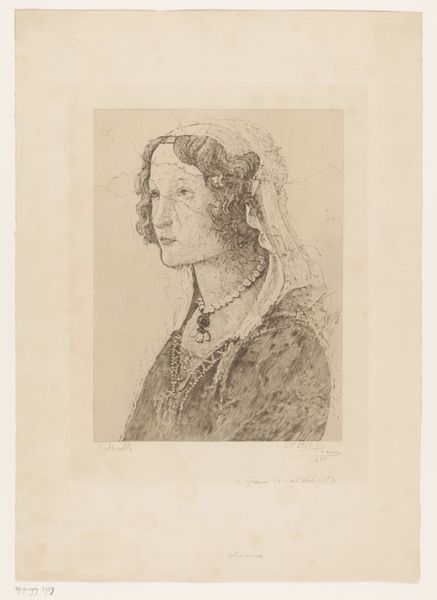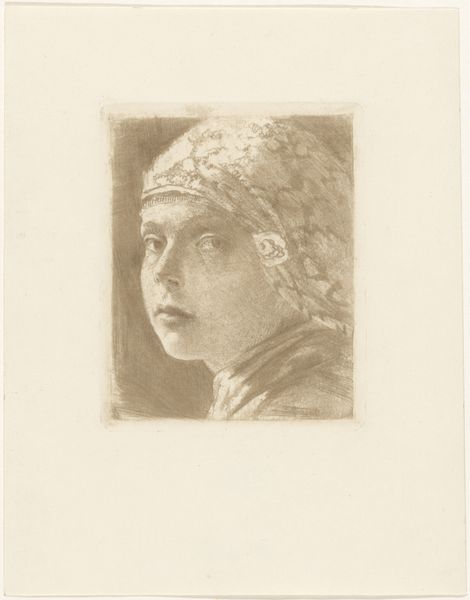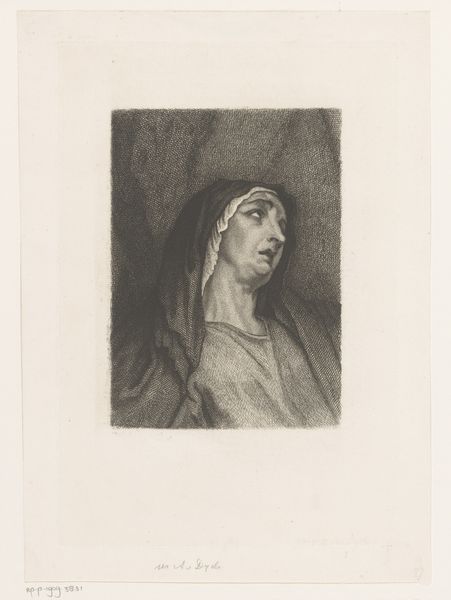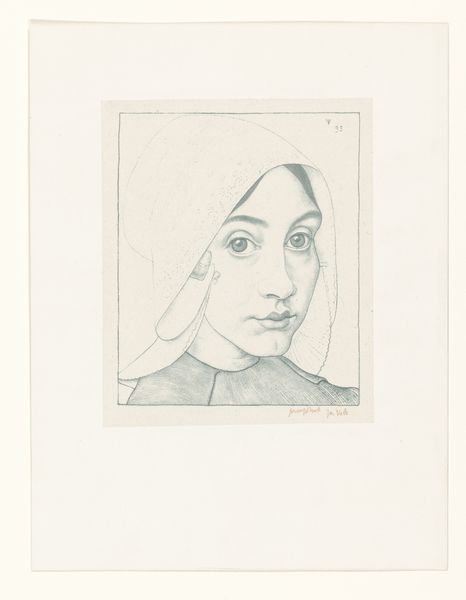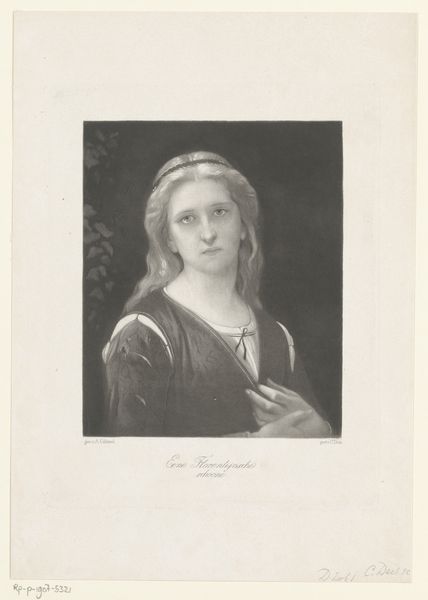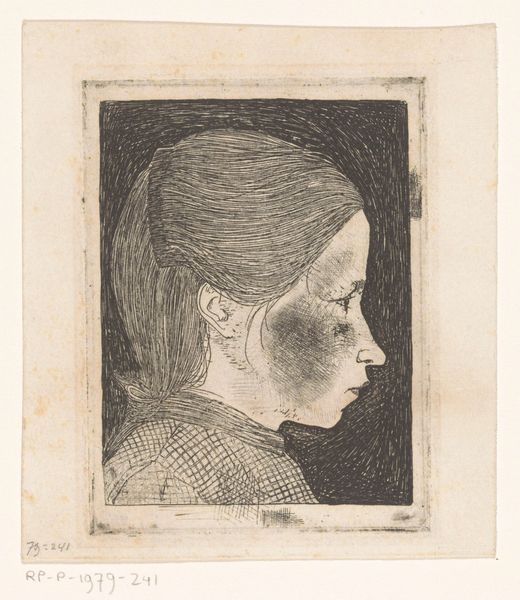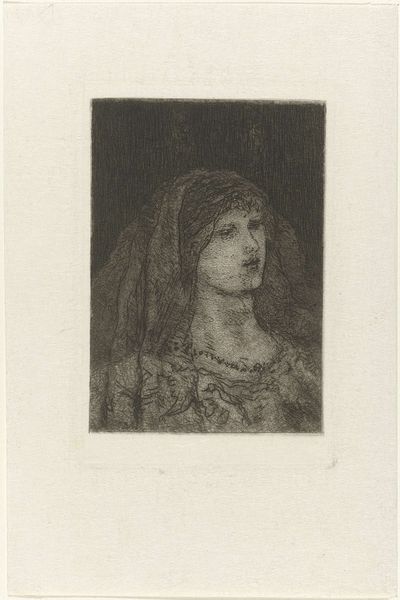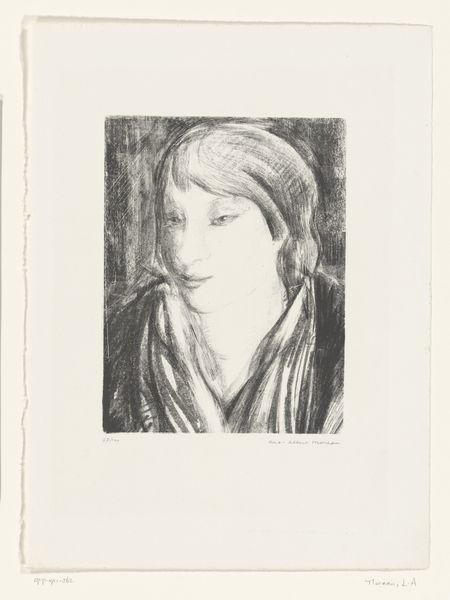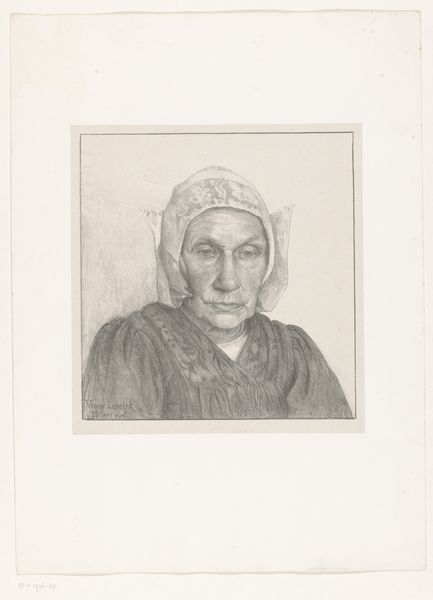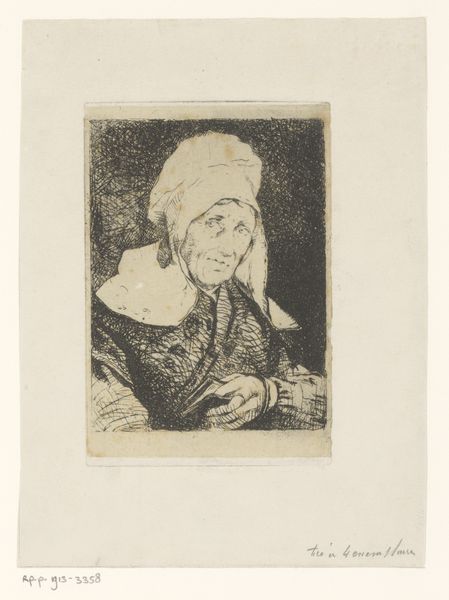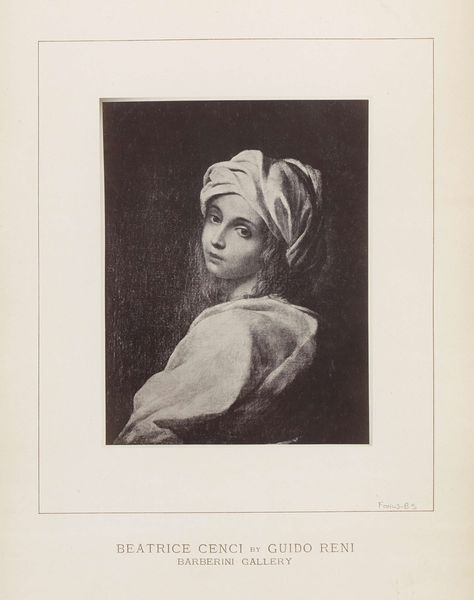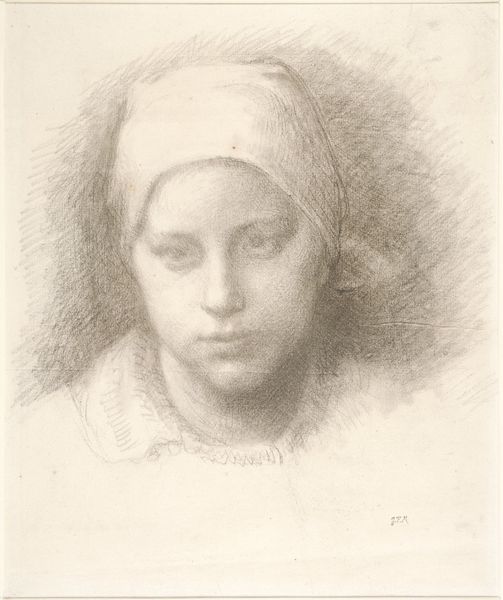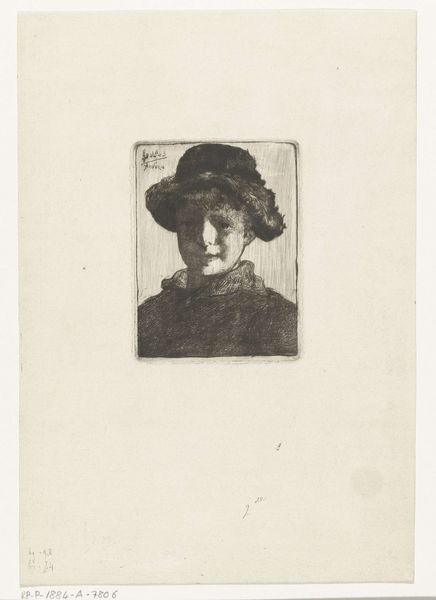
print, etching
#
portrait
#
dutch-golden-age
# print
#
etching
#
realism
#
monochrome
Dimensions: height 210 mm, width 171 mm
Copyright: Rijks Museum: Open Domain
Curator: Before us we have Philip Zilcken's etching, “Meisje met de parel”, or "Girl with a Pearl Earring," created sometime between 1867 and 1890. It’s currently held at the Rijksmuseum. Editor: My first thought? Melancholy. The monochrome palette emphasizes a stillness, an inwardness, that’s quite affecting. The darkness that surrounds her figure feels heavy. Curator: That darkness really highlights the girl’s luminous face and that signature pearl, drawing our eye directly to her expression. The pearl itself becomes a focal point for all kinds of projection. Editor: Right. Consider how an etching would allow for mass distribution. So here's Vermeer's iconic portrait reproduced—rendered, perhaps cheapened, by reproductive technologies. It prompts questions about the artwork’s value. What labour was involved? How did its reception change across different contexts of consumption? Curator: True. The pearl, of course, resonates with the historical contexts of trade and colonialism, a commodity obtained through exploitation. In some Renaissance paintings, pearls symbolize purity, so its juxtaposition to her gaze might be something ironic. Her tilted head carries a sense of vulnerability. Editor: What about Zilcken’s decision to recreate the painting using etching? It's a conscious engagement with artistic traditions, reinterpreting a canonical painting via new medium, while echoing, and commenting upon its process. Curator: Yes! An etching, allows for nuanced textures to be explored, it creates subtle gradations of tone to be evoked; I imagine Zilcken carefully layering the etched lines to replicate the original painting’s soft sfumato, while making a statement in and of itself. This itself evokes layers of time that are echoed between the reproduction, subject, pearl, and us. Editor: It's easy to get lost in the semiotics! The reproduction raises these questions about commodification and artistic labour that speak volumes. Curator: Precisely. It seems to invite reflections about the relationship between history and artistry, making us examine our own modern perspective and how we project onto these images over time.
Comments
No comments
Be the first to comment and join the conversation on the ultimate creative platform.
